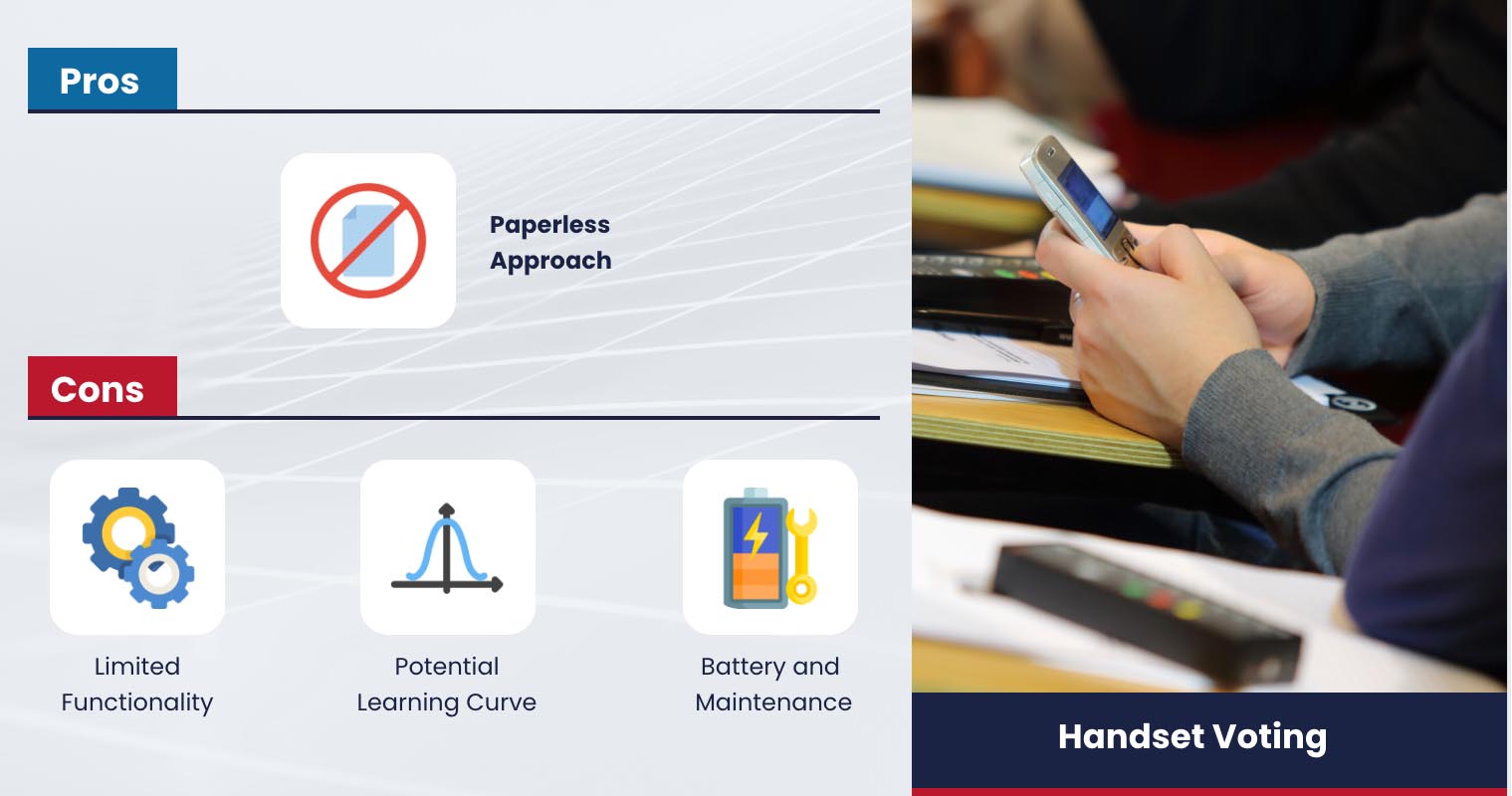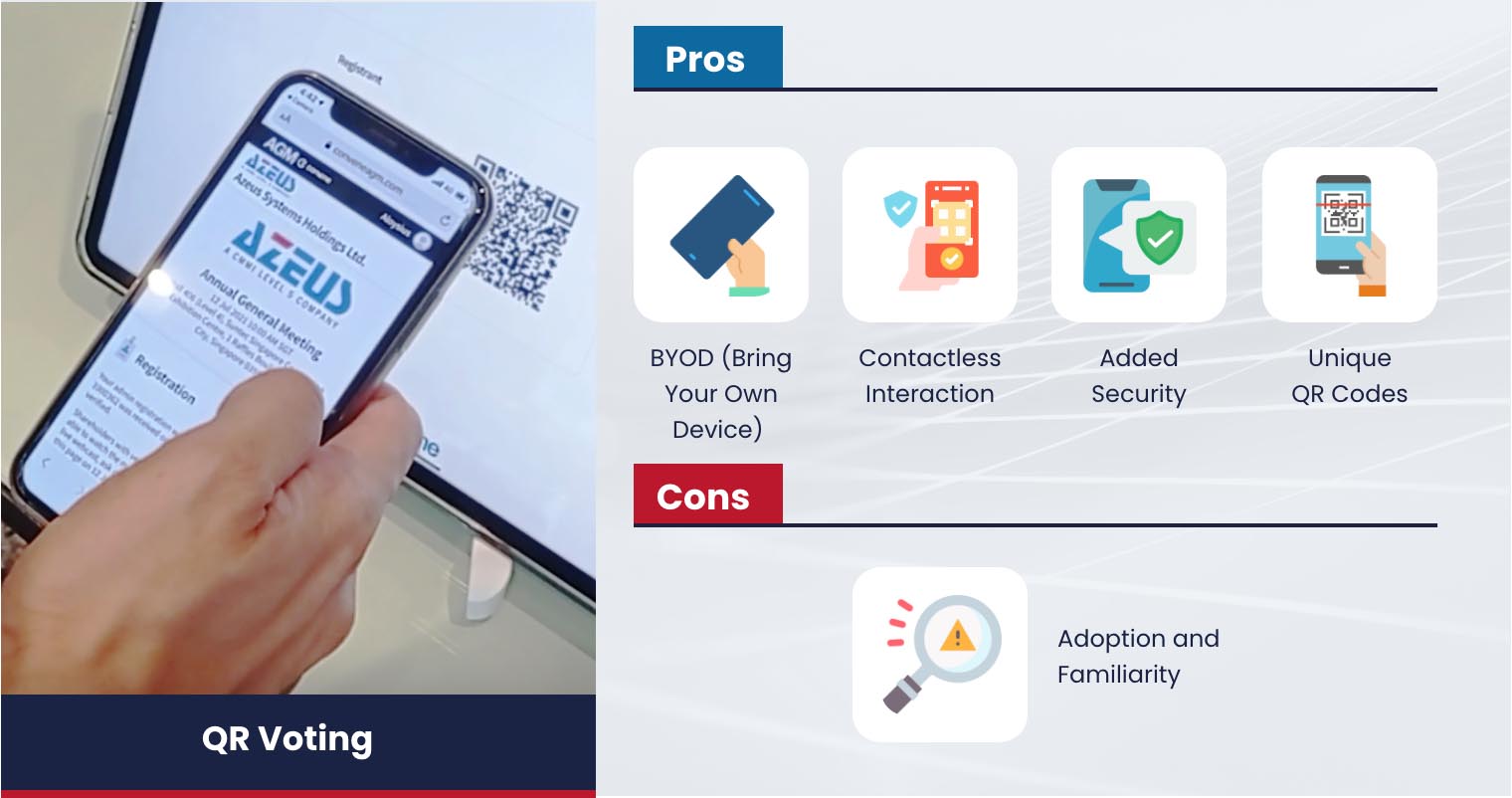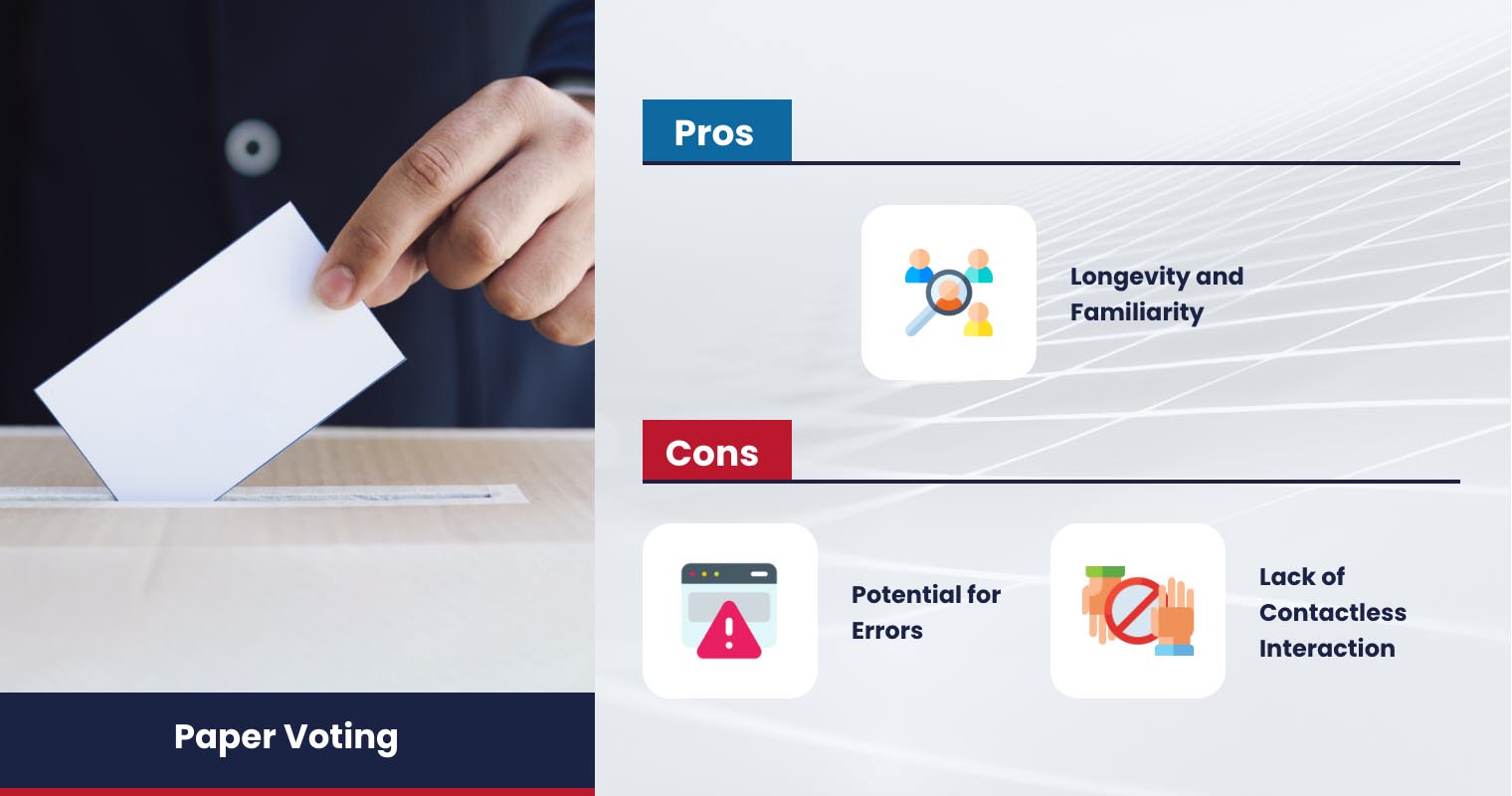Voting holds significant importance in Annual General Meetings (AGMs), serving as a crucial mechanism for participants to express their opinions and collectively make decisions. Today, regulatory frameworks in jurisdictions such as Singapore and other parts of Asia have placed specific requirements on AGM voting procedures. These regulations aim to ensure transparency, accountability, and robust shareholder engagement within the company’s governance.
For instance, the Singapore Companies Act specifies the appointment or removal of directors must be decided through voting, in which all members have the right to vote at the meeting. The Code of Corporate Governance, on the other hand, emphasizes the importance of fair and transparent voting processes, ensuring shareholders have the opportunity to participate effectively.
In this article, we will explore three prominent voting methods and assess their respective advantages and disadvantages.
Paper Voting
Paper voting has long been the established norm in annual general meetings. This meeting voting system involves distributing voting slips in person, who then mark their choices and submit them either through a manual collection process or by placing them in a designated ballot box. The prevalence of paper voting stems from its familiarity, which offers a sense of comfort and simplicity to shareholders who are accustomed to conventional voting procedures.
Pros:
Longevity and Familiarity — The paper voting system has served as the time-honored convention in board meetings for an extensive period. Its enduring presence has established a sense of familiarity among voters, fostering a climate of ease and comfort when engaging in the voting process.
Cons:
Potential for Errors — One drawback of paper voting is its susceptibility to errors. Manual handling and tabulation increase the risk of miscounting or misplacing votes, leading to discrepancies and compromised outcomes. To uphold integrity, meticulous procedures are necessary, including clear instructions, well-designed voting slips, and robust collection and storage systems.
Additionally, manual vote counting and tabulation can be time-consuming, potentially leading to delays in obtaining the final results. This delay can impact the efficiency and effectiveness of decision-making processes during board meetings.
Lack of Contactless Interaction — Today, the demand for contactless interactions has escalated significantly. However, paper voting necessitates physical proximity among participants, as they exchange and handle voting slips or utilize designated ballot boxes. This aspect raises valid concerns, particularly in scenarios where strict adherence to social distancing protocols is imperative.
Handset Voting

Handset voting introduces a digital aspect to the voting process, leveraging dedicated handheld devices to facilitate the casting of votes. Shareholders are provided with devices that have functionalities designed for voting purposes. Using the device’s keypad or touchscreen, voters input their choices, and the votes are instantly recorded.
Pros:
Paperless Approach — Handset voting introduces a digital aspect to the voting process, aligning with the current trend of adopting digitized processes for AGMs. It represents a substantial departure from traditional paper-based methods, eliminating the need for physical ballots. This shift towards electronic devices not only promotes an eco-conscious approach by reducing paper waste but also aligns with the global emphasis on embracing digital solutions. By eliminating the need for manual tabulation, this method saves time and reduces the potential for errors.
Cons:
Limited Functionality — Handset voting devices usually serve a singular purpose, focusing solely on voting. One specific limitation of handset devices is that they often have a limited number of buttons available for voting options. This can restrict the number of choices that participants can vote. Also, participants may encounter challenges when attempting to access supplementary materials during the meeting. This limitation has the potential to impact participants’ ability to make well-informed decisions during the meeting.
Potential Learning Curve — Participants who are unfamiliar with handheld devices or technology may require some time to adapt and become comfortable with the voting process. Training and support are likely needed to ensure all attendees can effectively navigate the device interface.
Battery and Maintenance — Handset devices require regular maintenance, including charging the devices and applying necessary updates. Adequate measures should be in place to ensure devices are fully charged and functioning correctly to avoid disruptions during the meeting.
QR Voting

QR voting is a contemporary and convenient method that makes use of smartphones and tablets. Participants can simply use their own devices to cast votes online by scanning QR codes displayed on screens or distributed materials. When the QR code is scanned, participants are directed to a secure voting platform or application, where they can effortlessly enter their choices.
Pros:
BYOD (Bring Your Own Device) — QR voting introduces the concept of utilizing personal smartphones or tablets, leveraging the devices participants are already accustomed to. This approach promotes a personalized and comfortable voting experience, as individuals can employ their preferred devices, taking advantage of the familiarity and functionalities they offer.
Contactless Interaction — QR voting eliminates the need for physical contact during the voting process. By simply scanning QR codes displayed on screens or distributed materials, participants can securely and conveniently cast their votes. This contactless interaction ensures the safety and well-being of all individuals involved while maintaining the efficiency of the AGM online voting process.
Added Security — QR voting can incorporate robust security measures, such as encryption and authentication, to protect the integrity of the live voting process. This enhances trust and confidence in the results, mitigating potential concerns about tampering or unauthorized access.
Unique QR Codes — QR codes can be generated uniquely for each voter in QR voting. This ensures better user security and integrity, as each code is specifically assigned to an individual participant, reducing the risk of unauthorized voting or tampering.
Cons:
Adoption and Familiarity — QR voting may require participants to familiarize themselves with new technology or scanning procedures. It is imperative to provide clear instructions to ensure attendees understand the process and possess the necessary devices to participate effectively. Offering guidance regarding the usage of QR codes will contribute to a more inclusive AGM voting experience. Nonetheless, QR code scanning is currently experiencing mainstream adoption. This growing acceptance and usage of QR codes indicate that attendees are likely to already be familiar with scanning QR codes.
Ultimately, the choice of voting method should align with the specific needs and preferences of the company, ensuring efficient and effective decision-making processes in general meetings.
ConveneAGM: Virtual and Hybrid AGMs Voting Made Easier

Committed to providing a seamless AGM online experience, ConveneAGM offers live voting and real-time webcast for companies worldwide. Its Live Voting feature is designed to automate the entire voting process, from casting, verification, tallying, to result presentation. Product Support Specialists are also available 24/7 to guide your boards and shareholders during the general meeting
Enhanced with robust security measures, including multi-factor authentication and Singpass integration, this advanced AGM software ensures simpler and more secure voting processes. Book a demo now and learn how ConveneAGM can elevate your virtual and hybrid meetings!
Jielynne is a Content Marketing Writer at Convene. With over six years of professional writing experience, she has worked with several SEO and digital marketing agencies, both local and international. She strives in crafting clear marketing copies and creative content for various platforms of Convene, such as the website and social media. Jielynne displays a decided lack of knowledge about football and calculus, but proudly aces in literary arts and corporate governance.





